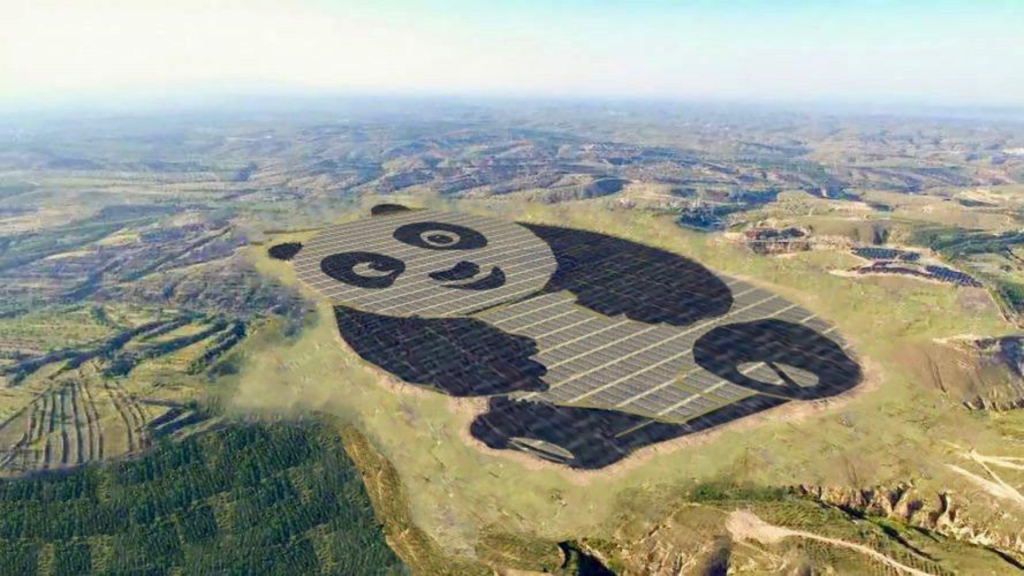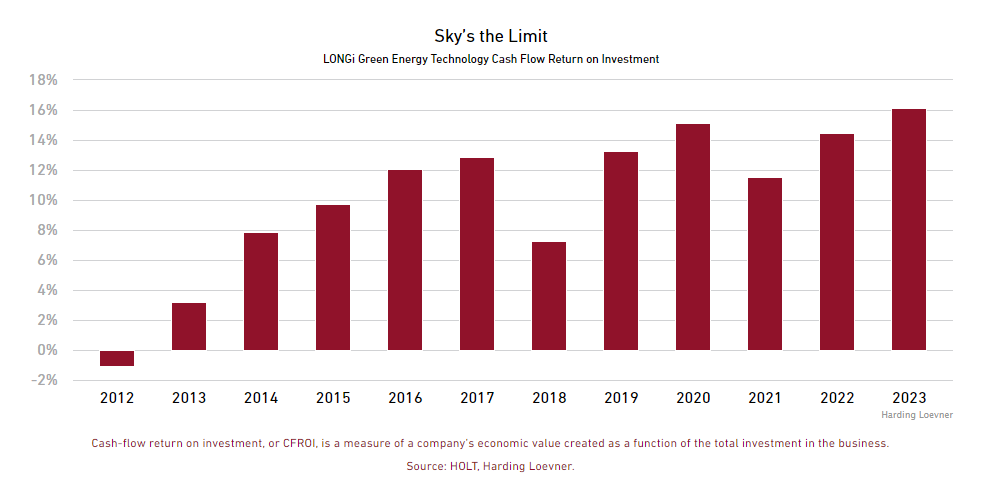It’s Always Sunny in Xi’an: China’s Solar Solution to Europe’s Gas Problem

As attempts to address climate change and energy independence converge, a company from a solar superpower stands to benefit.
Key Takeaways
- Europe’s growing demand for solar equipment has heated up even more with the continent’s urgent efforts to wean itself from Russia’s energy exports in support of Western sanctions over Russia’s invasion of Ukraine.
- China—already the world’s leading solar exporter and supplier of the majority of Europe’s solar equipment—will continue to be a major beneficiary and enabler of Europe’s solar push.
- Much of China’s solar dominance is attributable to LONGi, a Xi’an-based company whose relatively low international profile belies its role as the equivalent of the Taiwan Semiconductor of solar.
- While Europe and the US have periodically enacted tariffs in an attempt to re-shore solar manufacturing capacity, these efforts have largely failed in the face of LONGi’s competitive advantages and the adaptive strategies employed by companies up and down its highly evolved production chain.
As Europe’s green energy transition has been accelerated by the geopolitical exigencies of reducing its imports of Russian natural gas, the continent is rushing to expand its solar energy capacity. In May, the European Commission announced plans that call for “swift, massive deployment” on rooftops, starting with the most energy-intensive buildings and all new construction and buildings slated for rehabilitation. If this effort is successful, by the end of the decade Europe will have a total installed base of solar equipment capable of producing 600 gigawatts, enough to meet over 20% of the bloc’s total energy needs and equal to 60% of the world’s current solar capacity.
One of the biggest beneficiaries of this surge stands to be LONGi, a Xi’an, China-based company that is the world’s largest manufacturer of both an essential solar panel component, known as polysilicon wafers, and finished solar panels. “Europe is red hot,” says Lee Gao, China analyst with Harding Loevner. “It’s now LONGi’s strongest panel market, where it has nearly 30% market share. Overall, Chinese solar panel exports to Europe in the first quarter of 2022 more than doubled from the same time in 2021.” Chinese companies now supply the majority of all solar equipment in Europe.
Solar wafers moving through the production line at LONGi Green Energy Technology in X’ian, China. ©LONGi.
To understand how China became integral to global solar energy production, you need to look back at trade policies and corporate decisions over the past 20 years in China, Europe, and the US. Much of the groundbreaking research into solar energy took place in the US decades ago. However, in the 2000s, the Chinese government provided land and funding to fledgling solar energy equipment producers and subsidized the power rates paid to solar farm operators. This support enabled Chinese manufacturers to close the gap in technology and scale with their US competitors and flood the US with cheaper panels. To shield US manufacturers, in 2012 the Obama administration placed tariffs of as high as 36% on imports of Chinese solar panels and cells, the individual sun-absorbing squares that make up each panel. China retaliated with import tariffs on the one part of the supply chain where the US still had an edge: raw polysilicon (essentially refined sand). As China had been one of its largest export markets, the US polysilicon industry collapsed. Replacing this key link in the supply chain for Chinese photovoltaic manufacturers like LONGi, China sprouted its own polysilicon industry, which soon became the world’s largest.

LONGi then made a fateful strategic bet. At the time the company’s core product—polysilicon sliced from tubes into microscopic-thin wafers used to line the insides of solar cells—came in two basic types: one, made with multicrystalline polysilicon (“multi”), and another (monocrystalline, or “mono”) that was more costly to make but more efficient at transforming sunlight into energy. “Given a choice, Chinese manufacturers almost always focus first on price,” Gao says. But LONGi began specializing in the more expensive mono wafers, betting—correctly, as it turned out—that with enough investment in research and at sufficient scale it could bring down their cost of production.
LONGi’s investments created tremendous operating leverage, which it used to lower prices, eventually driving most of its competitors out of business. LONGi became the world’s largest solar wafer manufacturer, with a quarter of global capacity and nearly 50% of global sales. (A majority of its surviving competitors’ capacity sits idle due to their inability to compete on price or performance.) It subsequently forward integrated into manufacturing solar cells and the finished panel, vastly expanding its buyer pool beyond the relative handful of existing upstream customers, increasing its bargaining power, and providing it with even more significant cost advantages.
LONGi has played a significant role in lowering the average global cost of solar-generated electricity by 80% over the last decade, as its solar cells have set records for efficiency even as their price has fallen sharply. In thinking about LONGi’s ascendance, Gao says he is reminded of the former Taiwan Semiconductor Manufacturing Corporation (now going by TSMC), the company that has come to dominate the market for the world’s most advanced chips. As with TSMC, an entire ecosystem has grown up around LONGi, providing it with reliable local sources for everything from raw polysilicon to the special films that protect solar cells from the weather. First Applied Material (no relation to TSMC supplier US-based Applied Materials) enjoys over 50% of global market share for the latter. Suzhou Maxwell and Shenzhen SC New Energy Technology have achieved similar share in the screen printing and etching equipment used in solar cell production.

Tariff Cat-and-Mouse
As LONGi built its scale and cost advantages, US tariffs against Chinese solar makers have waxed and waned, with their express goal of protecting US producers having largely backfired.
After the US polysilicon industry withered, US manufacturers developed a rival solar technology—using cells coated with cadmium telluride rather than made from polysilicon—whose main selling points are that it’s cheap and doesn’t come from China. Chinese companies, meanwhile, found workarounds to the US tariffs by sending their parts to countries like Malaysia and Vietnam for final assembly into cells and panels. The net result of all the tariff cat-and-mouse is that panels made with Chinese parts still command 60% of the US market, with only the most price-sensitive buyers tolerating the lower efficiency and potential toxic chemical leaching of cadmium telluride panels.
The net result of all the tariffs and resulting evasion tactics is that panels made with Chinese parts still command 60% of the US market, with only the most price-sensitive buyers tolerating the lower efficiency and potential toxic chemical leaching of US-made cadmium telluride panels.
In February 2022, a small California-based solar module producer successfully petitioned the US Department of Commerce to investigate whether the solar cells and panels assembled in Southeast Asia are unfairly circumventing the tariffs on Chinese cells and panels by including a higher-than-allowed percentage of Chinese parts. With many US customers holding off on orders out of fear of getting hit with retroactive tariffs, completions of new US solar installations—especially by utilities, which almost exclusively deploy polysilicon panels assembled in Asia—all but ground to a halt. This drew the ire of the US Energy Department. Asked at a Senate hearing in early May what was as at stake if the investigation by her sister agency continued to drag on, Energy Secretary Jennifer Granholm warned of “a complete smothering” of jobs and US energy independence, adding that she was “deeply concerned” the US would miss its carbon reduction obligations under the Paris Agreement if the situation was not resolved quickly. A month later, President Biden declared a 24-month waiver of tariffs on Southeast Asian-assembled panels to clear the logjam.
As long as the US market was paralyzed, LONGi and other Chinese solar producers were happy to redirect panels to help Europe wean itself from Russian gas. Over the years, Europe has periodically imposed its own tariffs aimed at bolstering local solar manufacturing, and subsequently reversed them under pressure from European solar installation companies. At present, some tariffs remain on Chinese-made solar glass but, as glass is only one component of finished modules (and not a very high value one at that), the duties have done little to slow the recent deluge of Chinese imports.
Coming Full Circle
Just as last year’s global chip shortage heightened awareness of the risks associated with the world’s reliance on TSMC, the dominance of LONGi and other Chinese solar suppliers has led to calls in Europe and the US to rebuild their domestic solar manufacturing capacity. European industry groups have called for a €1 billion (US$1.07 billion) EU Solar Fund—much like the new EU Chips Fund—to provide seed capital for the billions in private investment that will be needed to re-establish a core set of state-of-the-art European-based manufacturers.
It will be years before such policies have a significant impact on where Europe, or the US for that matter, get their solar panels. Meanwhile, in China, solar electricity can now be generated so economically that state subsidies are no longer needed to spur development.
“Ultimately, the Chinese government and solar industry both agreed they’d just be better off without the subsidies,” says Gao. “Which is kind of ironic when you think about it. Things have really come full circle.”
Contributors
Analyst Lee Gao contributed research and viewpoints to this piece.

